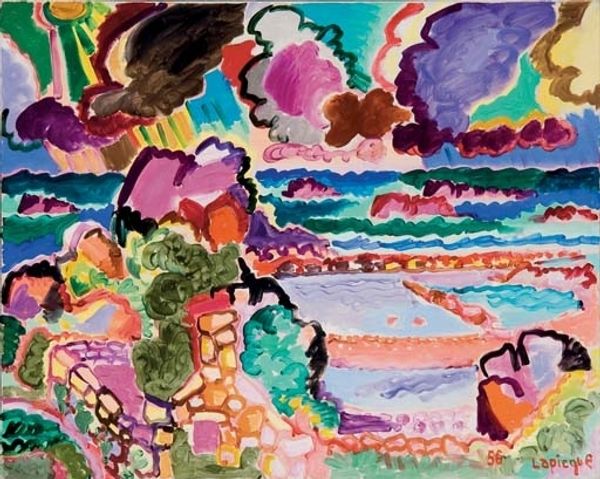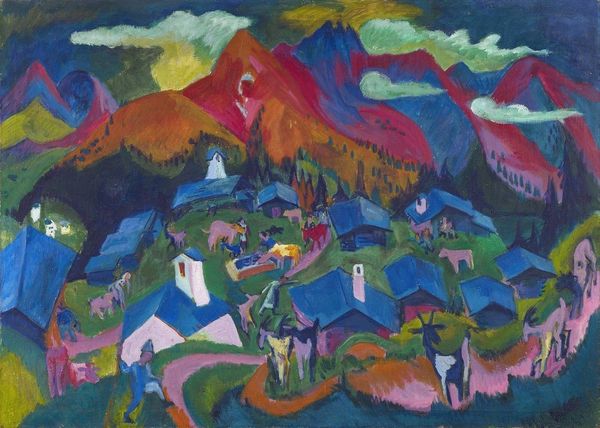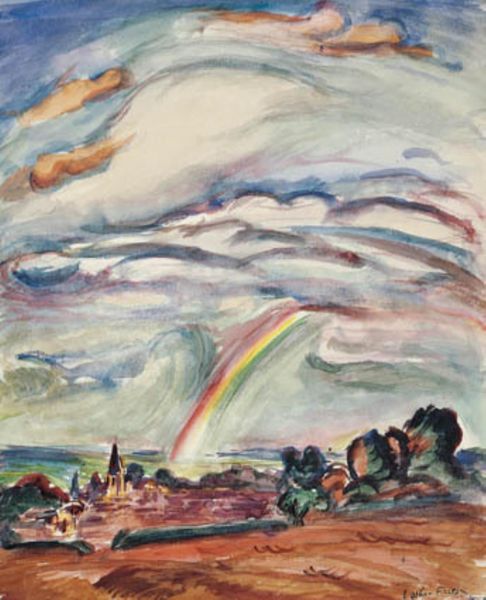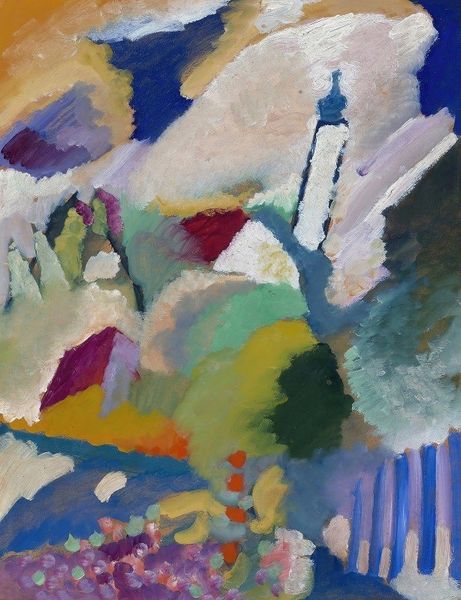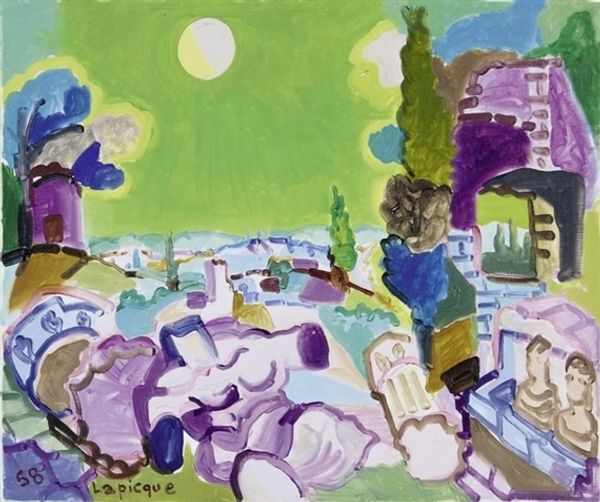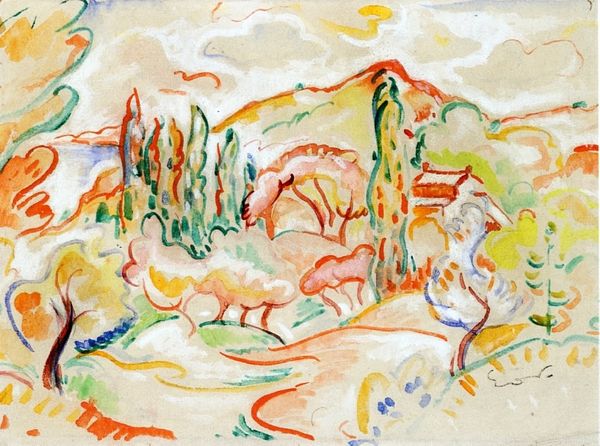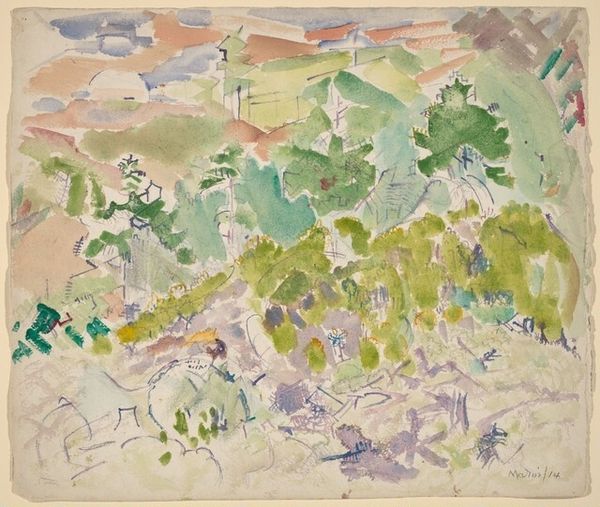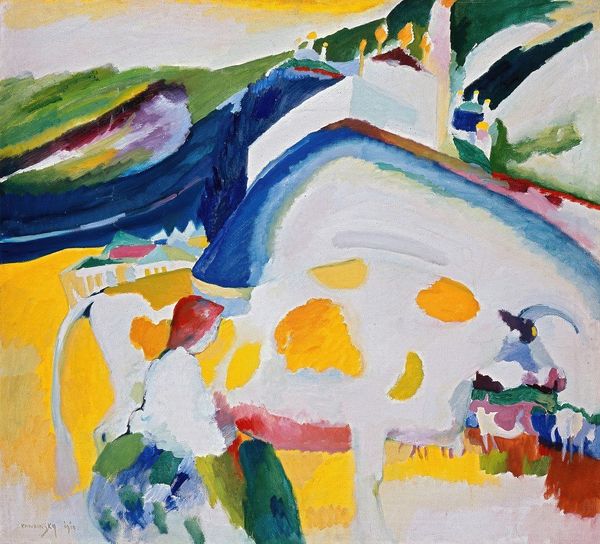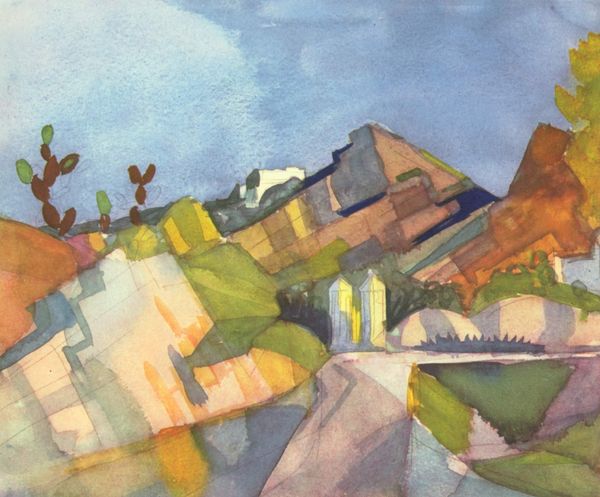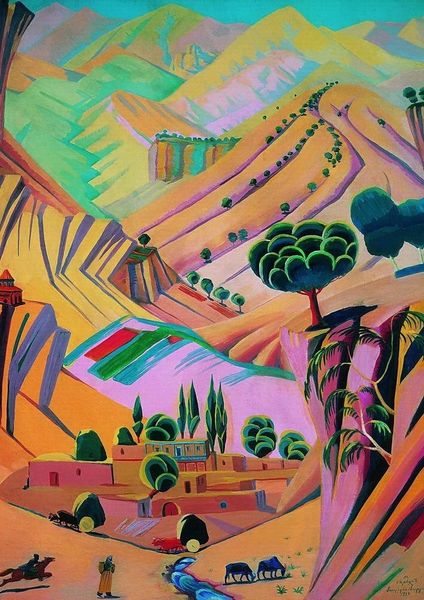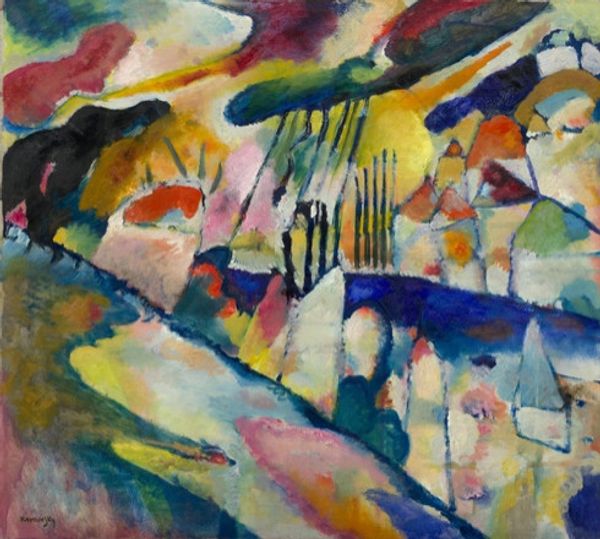
Copyright: Charles Lapicque,Fair Use
Curator: What a refreshing view! At first glance, the scene comes across as somewhat saccharine, but there's also something slightly unsettling about it... what do you make of it? Editor: Well, let's orient ourselves. What we are looking at here is Charles Lapicque’s 1959 work, "Printemps en Bretagne", or "Springtime in Brittany". He renders a very vivid plein-air depiction of the rugged Brittany coast. Brittany has been central to French art and cultural identity. What appears to be a spontaneous Fauvist landscape also has political weight, connecting national identity and landscape. Curator: Yes, the colors and loose brushwork do point towards Fauvist sensibilities. It's fascinating to see how Lapicque interprets that tradition so late in the game. The palette, while bright, is not necessarily harmonious; pinks and violets clash against blues and greens, but it conveys an intriguing naivety, too, don't you think? A symbolic return to an untarnished nature. Editor: The prevalence of cloud and stone imagery feels very elemental. I wonder, could there be cultural symbols here rooted in pre-Christian Celtic traditions or Druidic practices in Brittany? Those early societies understood weather, landscapes, and celestial events to signify great importance in matters of everyday life. Curator: I think your hunch is a fruitful one. One element I think grounds us in the 20th century however is the prominent building near the front, that looks to me almost like a resort home? While in some respects, the piece references the untamed Brittany landscape, we see subtle intrusions of the emerging tourist industry too, and it calls to mind how many artists struggle to balance romanticizing locales like this while depending on the infrastructures that threaten it. Editor: It strikes me that even Lapicque's signature placement hints at this blend. Note how it nestles among the buildings and foliage almost as another symbol. It serves almost like an emblem of himself amongst a land both tamed and not. Curator: You’re right! So even in its seeming innocence, this “Springtime in Brittany” encapsulates those complex relations between landscape, nation, memory, and modernity, rendered with a unique post-war sensibility. Editor: Ultimately it comes across as a memory rather than an explicit observation. A kind of longing to bridge nature, tradition, and cultural iconography in paint.
Comments
No comments
Be the first to comment and join the conversation on the ultimate creative platform.
